Butterkuchen
Butterkuchen (German butter cake) is a timeless, old-fashioned dessert. In Germany, we often serve afternoon cake with coffee or tea.
This German dessert is made with a rich blend of milk, sugar, cream, eggs, flour, and, of course, plenty of butter.
The result is a melt-in-your-mouth delicious, light, and airy cake that’s sweet and gooey.
Butterkuchen (German butter cake) is a classic German dessert. In Germany, we often serve afternoon cake with coffee or tea. We call this ‘Kaffee und Kuchen’. This afternoon ritual is when we Germans like to relax with a good cup of hot coffee and a slice (or two) of cake.
If you visit Germany one day (or have in the past), you’ll be amazed at the number of bakeries. German bakeries are amazing. And they’ll offer a wide array of cakes, pastries, and a large display of bread. And you’ll find Butterkuchen in almost every good bakery.
German Butter Cake Recipe Highlights
- FLAVOR – The yeasty dough, coupled with a creamy, buttery topping, delivers a rich and satisfying taste that’s hard to beat.
- NOSTALGIA – This Butterkuchen is more than just a cake; it’s a trip down memory lane for anyone who grew up with German or European pastries.
- WOW-FACTOR – The cake’s final presentation is sure to impress. With its golden-brown crust and buttery pockets, it’s a dessert that brings visual and culinary delight.
- VARIETY – Feel free to get creative with this recipe as a base. Add your own twist with extras like sliced almonds or a sprinkle of cinnamon to make it uniquely yours.
Ingredient Notes
Please check the recipe card below for a detailed, printable ingredient list.
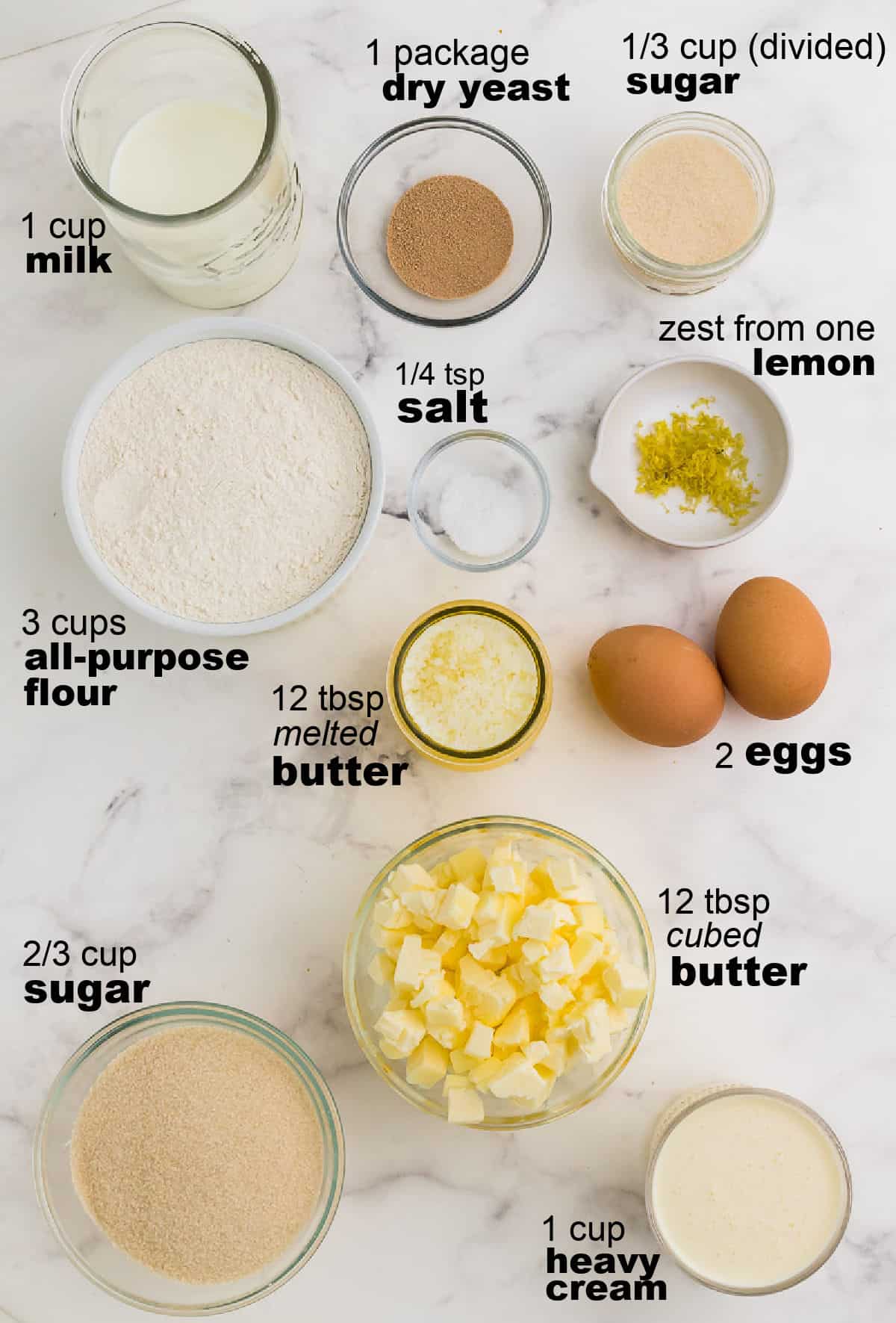
YEAST – You can use both fresh yeast or dry yeast. Fresh yeast is very common in German baking, but it’s often hard to find in the US. The only store that I know who sells it is Whole Foods. I’ve made this recipe many times with dry yeast, and it tastes just as delicious.
MILK – This is a recipe where I don’t count calories and always use whole milk. But you could experiment using skim or other low-fat milk. Make sure to gently warm the milk. The temperature should be below 95° Fahrenheit.
SUGAR – Granulated sugar is fine. I’ve started to look for less processed sugar, which is why the sugar in the picture is a little more yellow. But any granulated sugar will work. Divide the sugar. ⅓ cup for the dough and ⅔ for the topping.
FLOUR – I use all-purpose flour.
EGGS – I strongly recommend using eggs at room temperature. Simply remove the eggs from the fridge about 30 minutes before you start baking.
BUTTER – Make sure to use unsalted butter. Divide the butter:
12 tablespoons melted butter + 12 tablespoons cubed and chilled
HEAVY CREAM – Our “secret” ingredient makes this butter cake so rich, tender, and moist.
Additions and Variations
CINNAMON – Sprinkle a tablespoon of cinnamon over the butter cake before you put it in the oven.
ALMONDS – Sprinkle a cup of sliced blanched almonds over the cake.
How To Make German Butterkuchen (Butter Cake)
Please check the printable recipe card below for more detailed instructions.
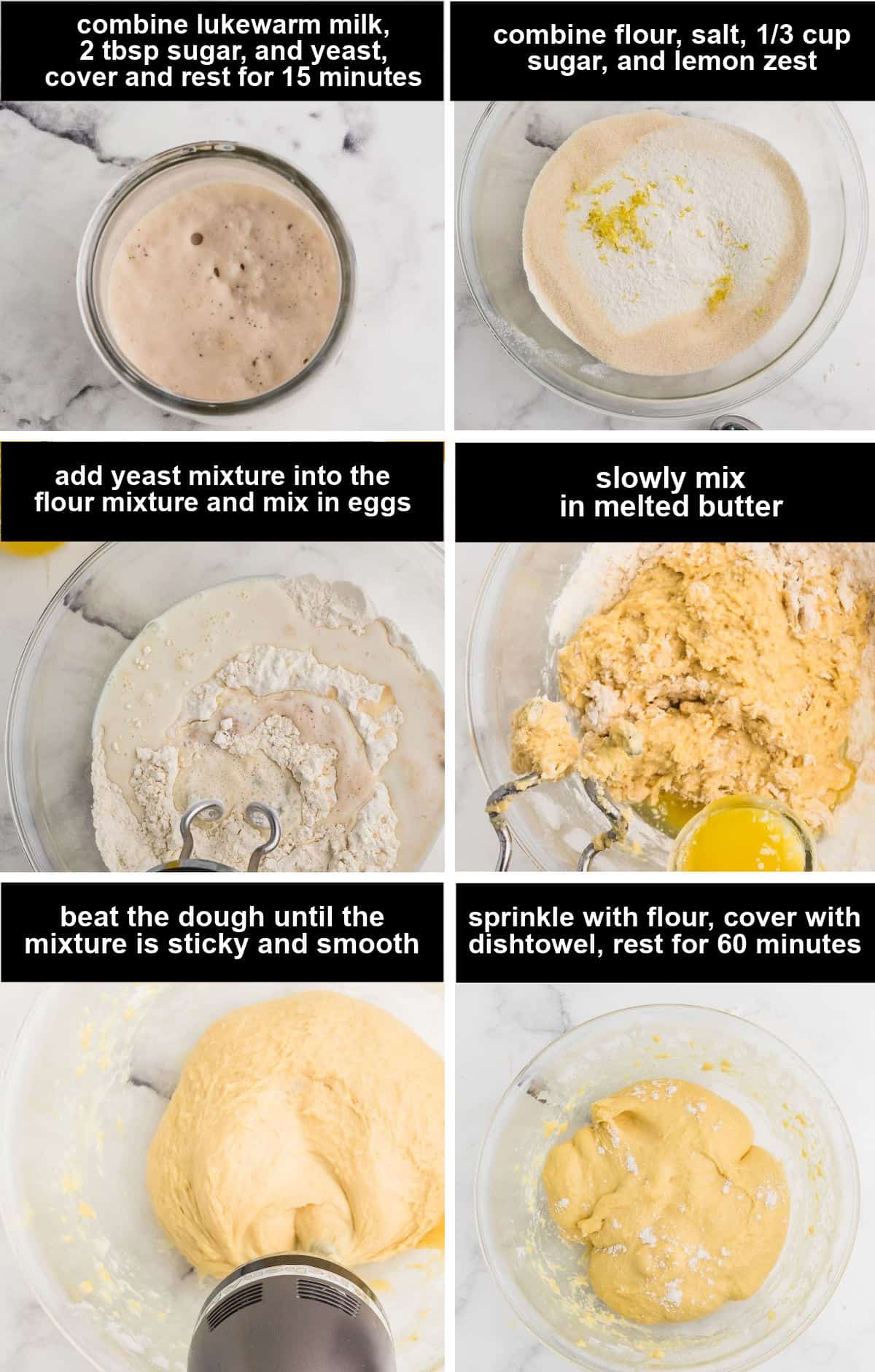
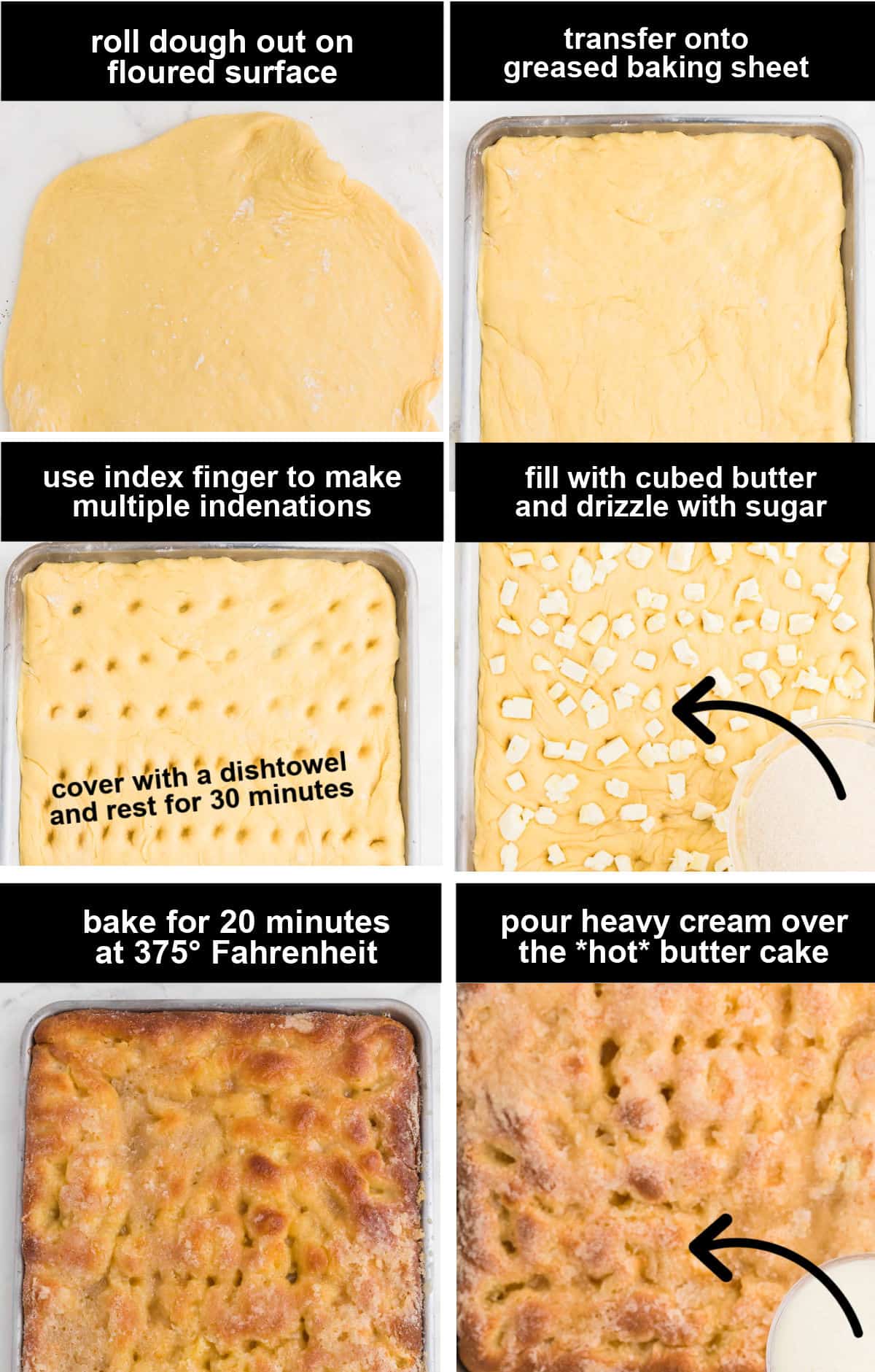
- Mix dry yeast, 2 tablespoons of sugar, and lukewarm milk; cover and let sit for 15 minutes.
- Combine sifted flour, salt, sugar, and optional lemon zest in a large bowl with the yeast mixture. Add eggs one at a time and melted butter; mix well and let rest for 1 hour.
- Roll out the dough and place it in a 9×13 baking sheet; make indentations with your index finger.
- Insert cubed butter into the indentations and sprinkle the remaining sugar on top. Bake in a preheated 375º Fahrenheit oven for 20-25 minutes until golden brown.
Leftovers
STORE – To keep any leftover coffee cake fresh, place it in an airtight container. Make sure the lid is tightly sealed. This will prevent the cake from drying out and stay fresh for up to 3 days when stored at room temperature.
FREEZE – Freezing is a viable option for longer-term storage. Wrap individual slices of coffee cake in plastic wrap securely. Next, place these wrapped slices into a ziplock bag, removing as much air as possible before sealing. Your frozen slices will keep their quality for up to 3 months.
REHEAT – When you’re ready to enjoy a slice again, reheating is simple. Place a frozen or room-temperature slice in the microwave and heat for 20-30 seconds.
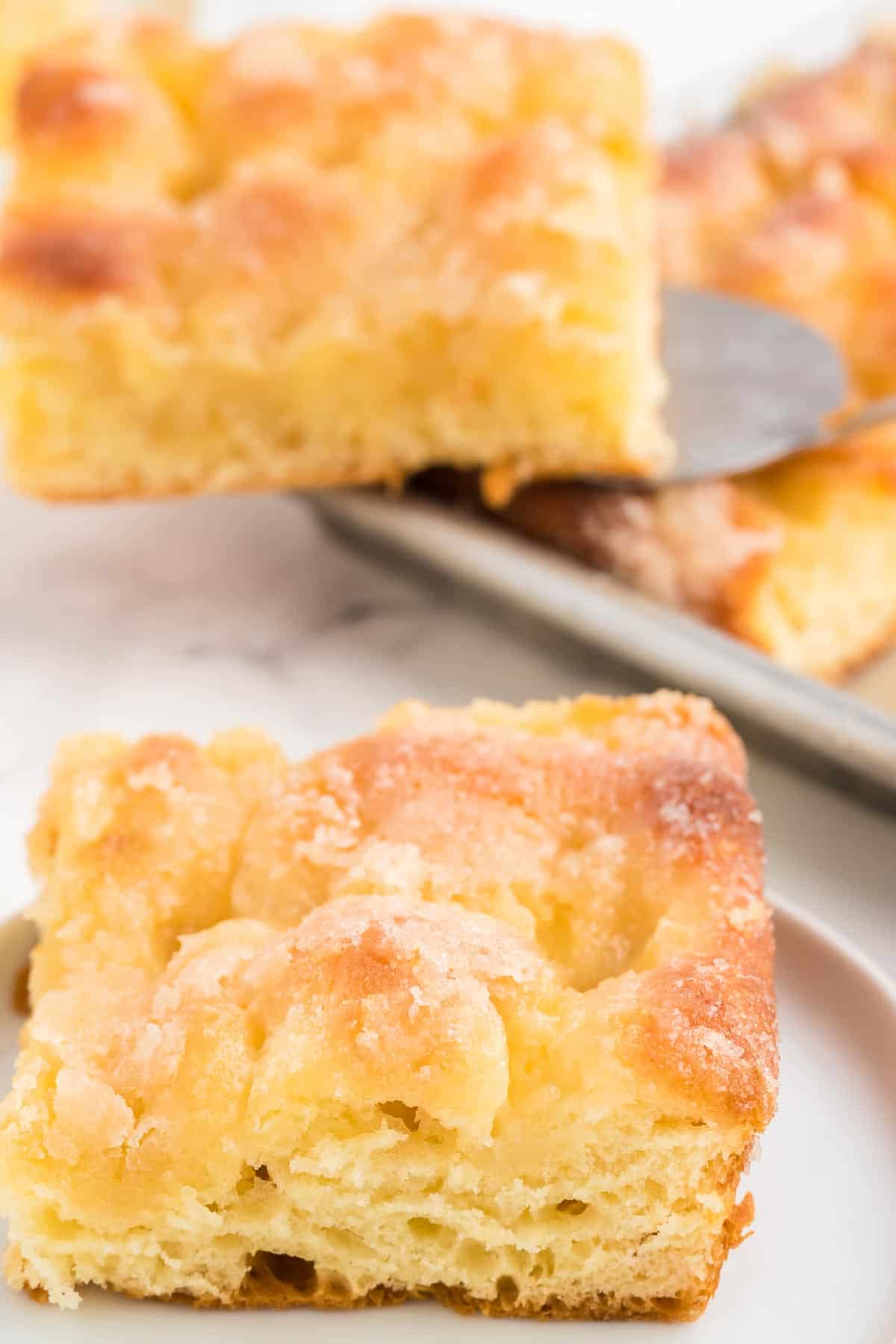
Recipe Success Tips
Don’t fear making yeast dough. Making yeast dough sometimes gets a bad rap because it seems difficult to get a good rise.
Here are some easy tips that will help you master any yeast dough with ease.
- Make sure that all your ingredients are at room temperature. If you store your eggs in the fridge, take them out when you start baking.
- Begin by melting the butter first. The butter can cool until you add it to the yeast dough. The melted butter should be the last ingredient you’ll add to the dough.
- Similarly, make sure to warm your milk gently. You don’t want it hotter than 95° Fahrenheit.
- Stick to the proofing (to rest and rise) times. This recipe has three proofs (time for the dough to rest and rise).
- Proof # 1: After making the yeast mixture. (15 minutes)
- Proof #2: After beating the dough into a smooth dough ball. (60 minutes)
- Proof #3: After rolling out the dough and transferring it to the pre-greased baking sheet. (20-30 minutes)
- Preheat the oven towards the end of the last proofing.
- Each time you proof the dough, cover it with a dish towel and keep it in a warm environment. Some ovens have a proof setting which is awesome.
Don’t be thrown off by the lengthy proof times! The work time for this cake is just about 20 minutes.
And if you have little ones around, you can ask them to help ‘poke the butter cake holes’ and fill them with the chilled butter pieces. This is how I learned baking many years ago.
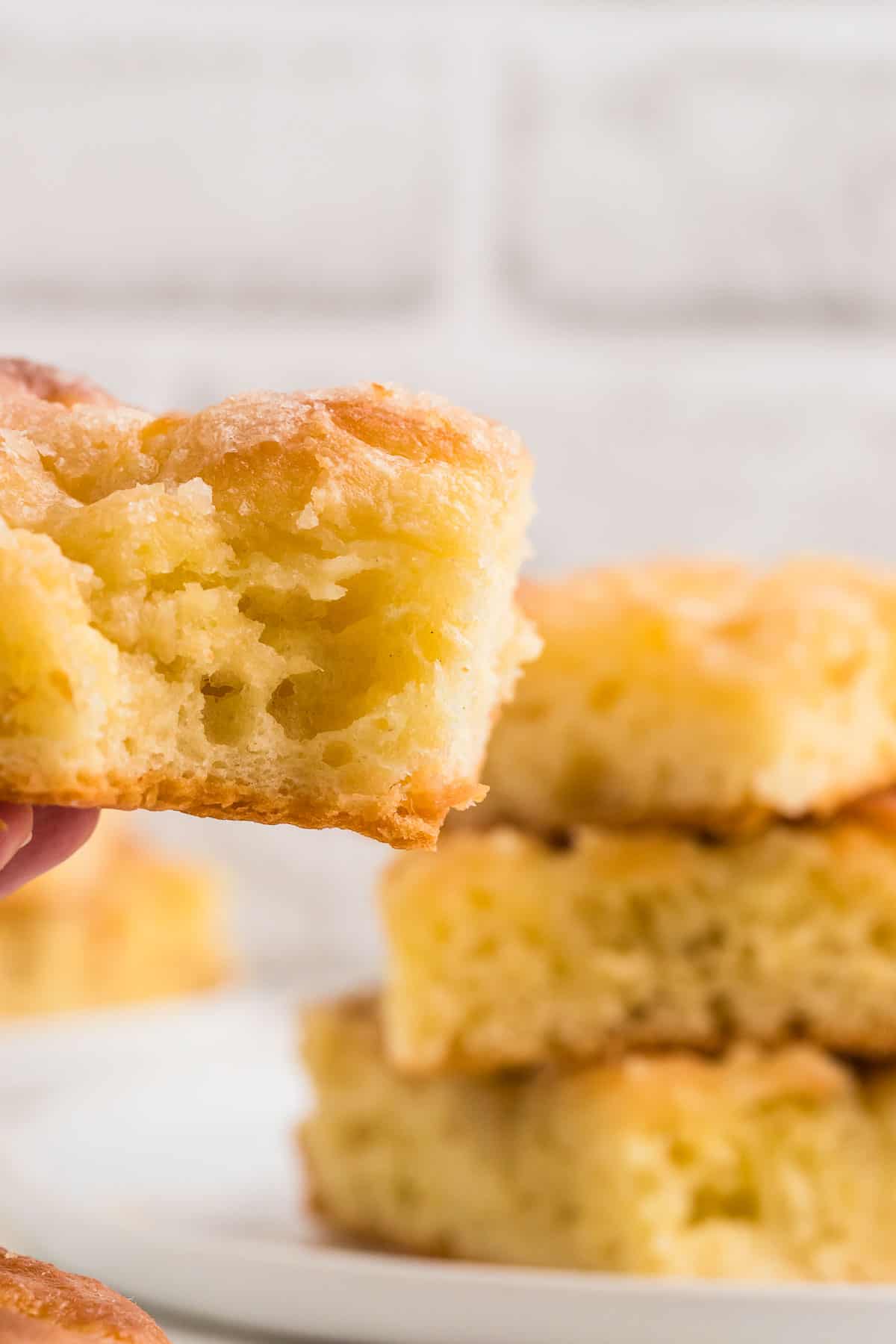
More Easy and Delicious German Dessert Ideas
BEE STING CAKE – This is a quick and easy recipe version of one of Germany’s most famous cakes.
CHERRY POUND CAKE – an old-fashioned German dessert.
SANDKUCHEN – This is a delicious German bundt cake. And no, we’re not using ‘sand’; it’s just the German name for this type of cake.
MULLED WINE CAKE – Classic mulled wine flavored combined with chocolate in a delicious bundt cake.
STRUSELKUCHEN – Also known as a German Crumb Cake. It’s a tender, buttery cake with a layer of jam and a rich and crumbly top.
Ingredients
- 1 package dry yeast
- 1 cup milk lukewarm (below 95° Fahrenheit)
- 1 cup sugar divided into ⅓ cup for the dough and ⅔ for the topping
- 3 cups all-purpose flour
- ¼ teaspoon salt
- 1 teaspoon lemon zest *optional*
- 2 whole eggs room temperature
- 3 sticks butter divided, 12 tablespoons melted ~ 12 tablespoons cubed
- 1 cup heavy cream
Instructions
Prep
- Grease a 9×13 inch baking sheet and set aside.
- Remove the eggs from the fridge to allow them to reach room temperature before adding them to the dough.
- Melt 12 tablespoons (¾ cup) of butter. Set aside to cool.
- Gently warm the milk until lukewarm (90-95° Fahrenheit).
- Sift flour into a large bowl and combine with salt, sugar, and lemon zest.
Making The Yeast Dough
- Combine dry yeast with 2 tablespoons of sugar and lukewarm milk in a small bowl. Give it a quick stir. Cover with a dishtowel and rest in a warm place for 15 minutes.
- Add the yeast mixture into the flour mixture and beat with an electric mixer (use the dough hook attachment). Add the eggs, one at a time. Continue to beat until all of the ingredients are well combined.
- Slowly pour the melted butter into the dough. Keep mixing at medium-high speed until all ingredients have been well combined. The dough should be sticky and smooth.
- Sprinkle the top of the dough with a tablespoon of flour. Cover the bowl with a dishtowel and store in a warm place for 1 hour.
Preparing the Dough in the Baking Sheet
- Lightly flour a work surface. Use a rolling pin to roll out the dough. Transfer dough to a 9×13 baking sheet. Use your hands to mold the dough into the corners of the baking sheet. Cover with a dishtowel and allow to rest for 30 minutes.
- Preheat the oven to 375° Fahrenheit.
- Use your index finger to make small indentations all over the dough. Add 12 tablespoons of chilled, chopped butter into the indentations. Coat the cake with the remaining sugar.
Baking
- Bake the butter cake for 20-25 minutes or until golden brown. Remove from the oven and immediately pour the heavy cream over the cake. Allow the cream to soak in and for the cake to cool down. Serve when still slightly warm.
Video
Notes
Bonus tip: reheat before serving it again. Freeze – This cake freezes very well. 1. Allow the cake to cool completely. 2. Slice and wrap the cake in cling film and aluminum foil. Or use a freezer-friendly reusable freezer-friendly container. Recipe Success Tips
- Remove the eggs 30 to 45 minutes before you start baking. Eggs should be at room temperature.
- Both the melted butter and warmed milk shouldn’t be too hot.
- Allow the dough to proof (rest and rise) long enough.
- With a little bit of patience, you’ll have the moistest, lightest butter cake imaginable. You’ve got this.
Nutritional Information
Nutritional Disclaimer
Cheerful Cook team members are not trained nutritionists or medical professionals. Calorie information and nutritional values are estimates. If you have nutritional concerns, we recommend using a nutritional calculator.
Maike Corbett is the founder and food blogger of Cheerful Cook, a popular recipe website featuring comfort food recipes from the US and Germany. She has been featured in numerous media outlets, including the AP Wire and MSN.

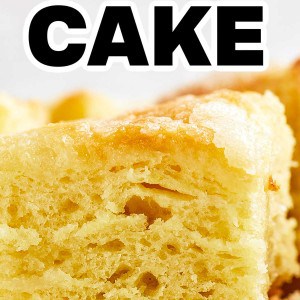
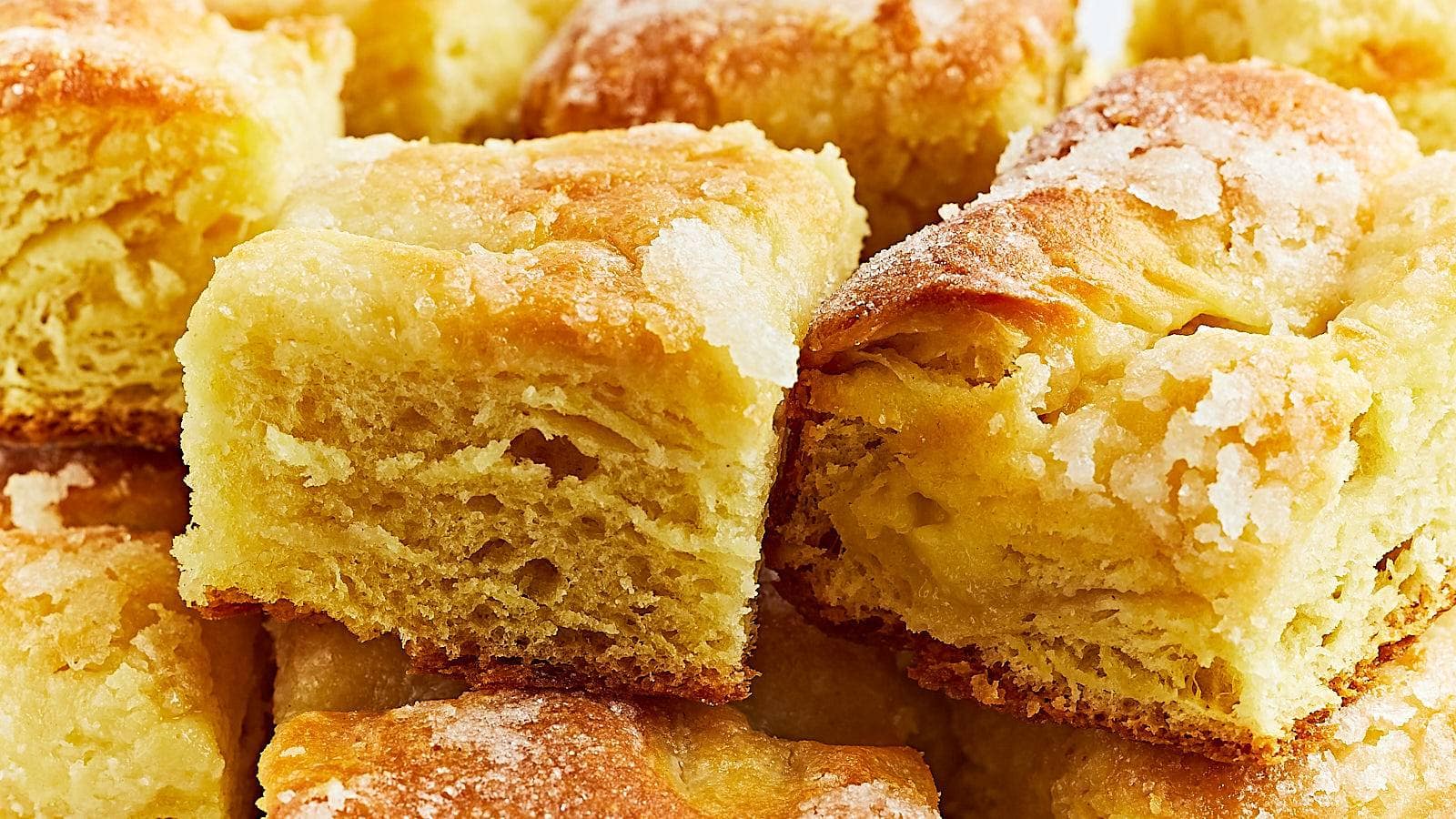
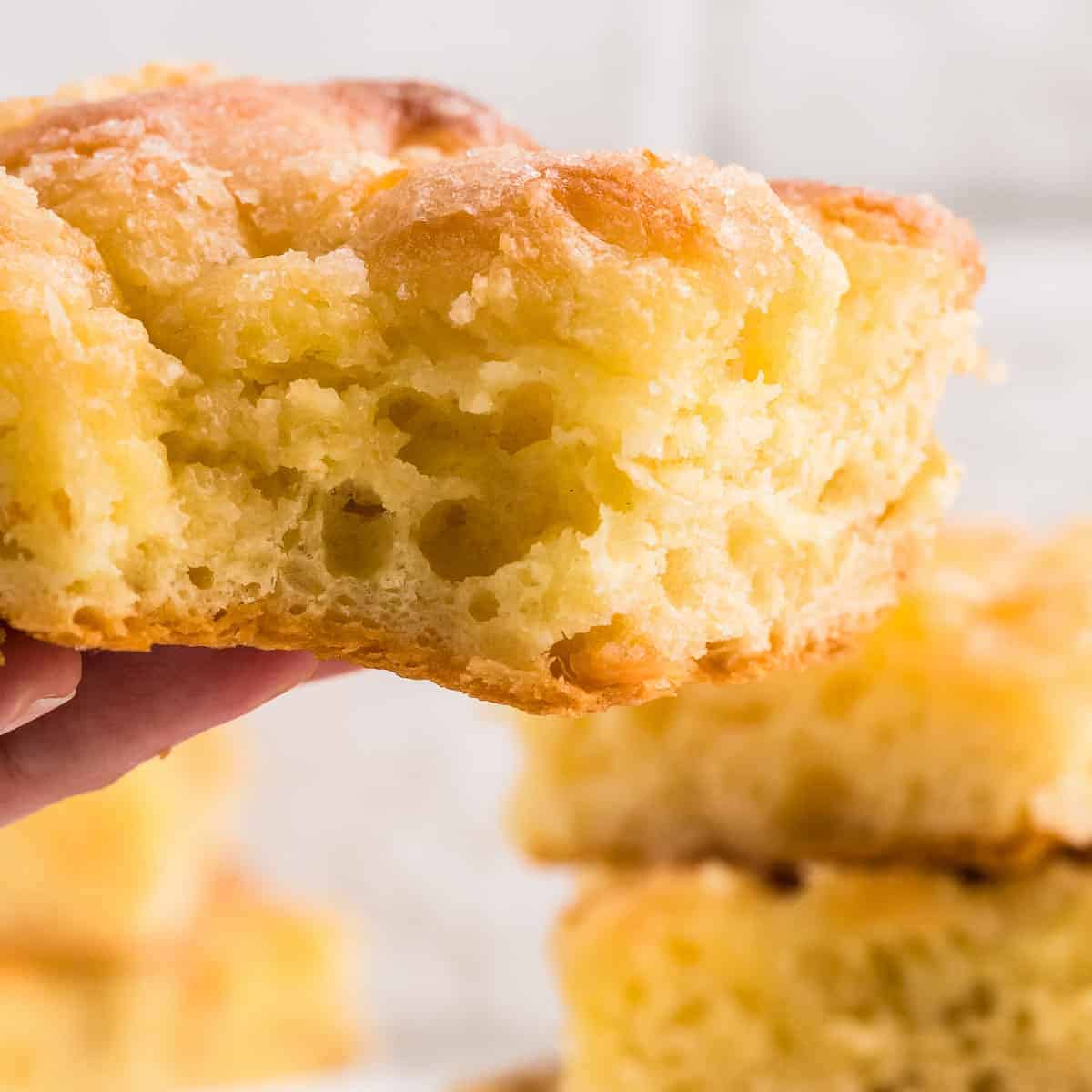
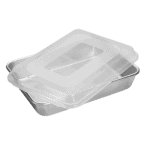
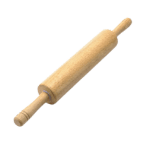
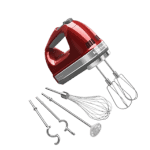
How much cream do you pour on the baked cak?
It’s one cup. Sorry about the confusion. I just updated the recipe card. 😊
I just tried making this and my dough was way too sticky to roll out. Any ideas?
I’m sorry you ran into that problem. Try adding a little flour. Will make the dough less sticky and easier to roll out.
It’s okay, thank you!
we went to Bremanhaven germany in 1948 when i was 12 and my aunt made a yellow batter cake using 12 eggs and baked it a bundt pan.
do you know of such a recipe?
lori
Hi Lori. Let me do some research – aka facetime with my 94-year-old Oma next week. 😉
I just made this, es war lecker. My family loved it. The only change I made was adding a bit of cinnamon. If you are making this for the first time, make sure your cubes of chilled butter are on the smaller side (like in the pictures shown). If they are too large your cake will still taste fine, but will have large dents. Great recipe, danke schön
How long do you use the standing mixer for after you add the butter?
After you add the butter, mix on medium speed for about 5 to 7 minutes. The dough should be smooth, soft, and pull cleanly from the sides of the bowl. If it’s still rough or sticky after 5 minutes, keep mixing a little longer until it comes together.
The best! Amazingly delicious!
I made this tonight for the family. It is absolutely delicious! The largest pan I have was a little too small, but the cake was still wonderful. If you are wondering what the heavy cream is for, it creates a lovey custard filling. It’s a very rich dessert, but we each had two pieces. Thanks for the recipe, Maike.
Should the cream be cold, room temperature, warm, or hot? Thank you so much. I’m going to make this for Christmas morning. I might also reduce the yeast and bit and try a slow rise in the fridge over night to save time in the morning (maybe also gain additional flavor?). It looks like an amazing recipe that I am definitely excited to try with regular rise as well!
The whipped cream is the last step. I usually get it out while the cake is baking.
Especially when baking with yeast, I caution against changing proportions. In Germany, we bake primarily with fresh (cubed) yeast. You can get it in the US, too, but it’s hard to find, sometimes Whole Foods carries it (Red Star brand). So when I tested the recipe I rewrote it for dry yeast. And the proportions in the recipe card worked well.
But I didn’t test it for an overnight rise. Generally, speaking you’d use cold ingredients for an overnight rise in the fridge to avoid that the dough rises too much (I suppose that’s why you want to reduce the amount of yeast). I will probably work out just fine, as this is a rather straightforward recipe. Just be aware that I didn’t test this method. But I hope it works out. Merry Christmas (Frohe Weihnachten), I hope you and your family will have a wonderful Christmas Day.
I just read earlier in your post it says make sure all ingredients are all room temperature. So you can disregard my question.